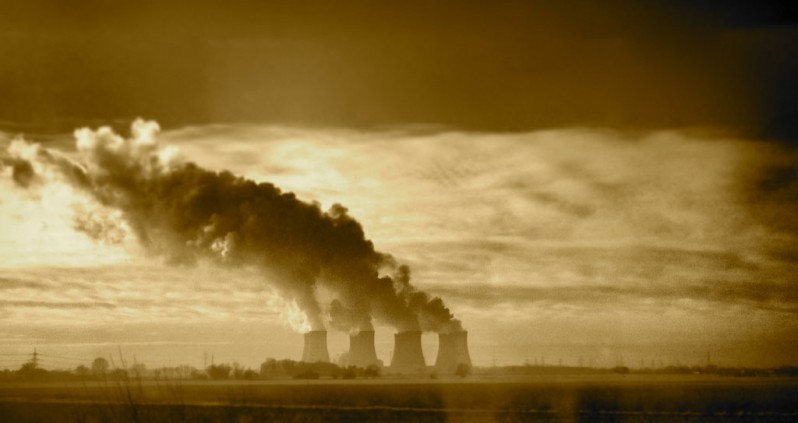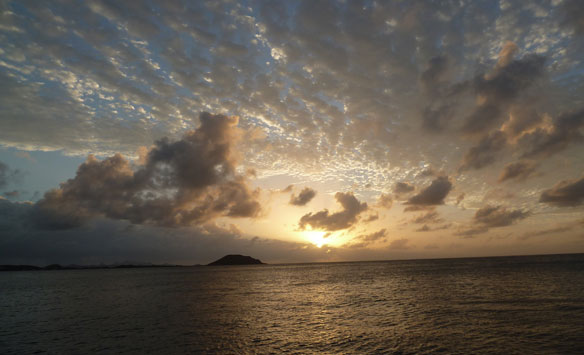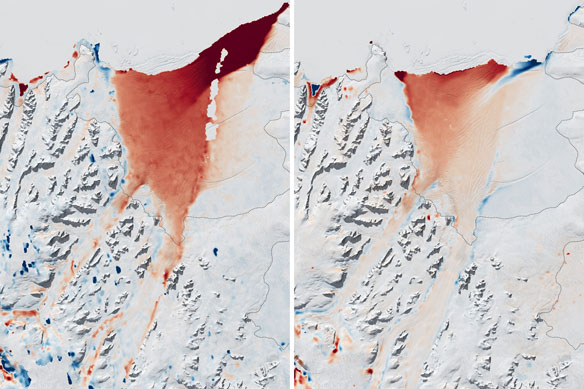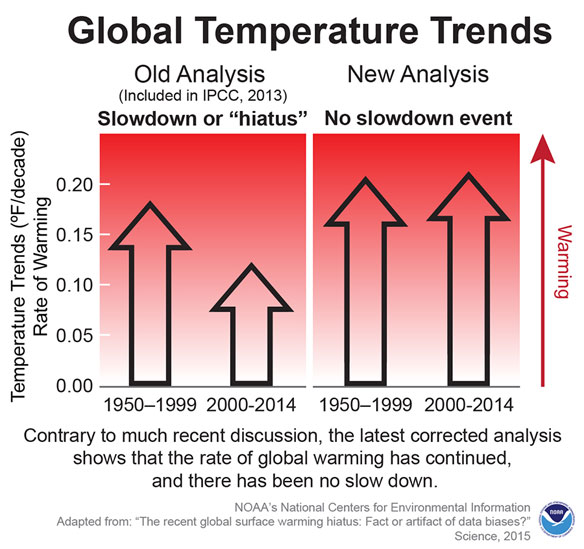Analysis Shows Increased Carbon Intensity from Canadian Oil Sands

Gasoline and diesel refined from Canadian oil sands has a higher carbon impact than fuels derived from conventional domestic crude sources, a new study concludes.
Last Month Was Hottest May in Modern History: NOAA

Last month marked the hottest May in modern history, continuing a troubling trend of rising global temperatures, US government scientists said Thursday.
Pope Francis, in Sweeping Encyclical, Calls for Swift Action on Climate Change

Pope Francis on Thursday called for a radical transformation of politics, economics and individual lifestyles to confront environmental degradation and climate change. He calls on ordinary people, regardless of faith, to pressure politicians for change.
Accelerated Warming of the Continental Shelf Off Northeast Coast

A couple of unexplained large scale changes in the waters off the northeast coast of the U.S. have oceanographers perplexed: an accelerated rate of sea level rise compared to most other parts of the world; and the disturbing signs of collapsing fisheries in the region.
My Generation Does Give a Damn About Climate Change, Says 14-year-old Activist

14-year-old activist explains why young people are not afraid to take on the fossil fuel industry.
Turning to the Ocean to Help Unravel the Mysteries of Cloud Formation

To understand the Earth’s climate, scientists must consider and measure both human-made environmental pollutants and naturally occurring processes that influence how much energy the planet absorbs from the sun or radiates back into space. One naturally occurring process that plays a big role in this delicate balance is the formation of clouds.
Making Climate Models Available to the Public

On June 9, 2015, NASA released data showing how temperature and rainfall patterns worldwide may change through the year 2100 as a result of growing concentrations of greenhouse gases in Earth’s atmosphere. The 11-terabyte data set is freely available to the public and shows projected changes in response to different scenarios of increasing carbon dioxide.
Last Call for Larsen B

Located on the coast of the Antarctic Peninsula, the Larsen B remnant is about 1,600 square kilometers (625 square miles) in area and as much as 500 meters (1,640 feet) thick. This last remaining section of Larsen B Ice Shelf, which partially collapsed in 2002, is weakening and is likely to disintegrate completely before the end of the decade.
Data Show No Recent Slowdown in Global Warming: New NOAA Analysis

A new study published online today in the journal Science, finds that the rate of global warming during the last 15 years has been as fast as or faster than that seen during the latter half of the 20th Century. The study refutes the notion that there has been a slowdown or “hiatus” in the rate of global warming in recent years.
